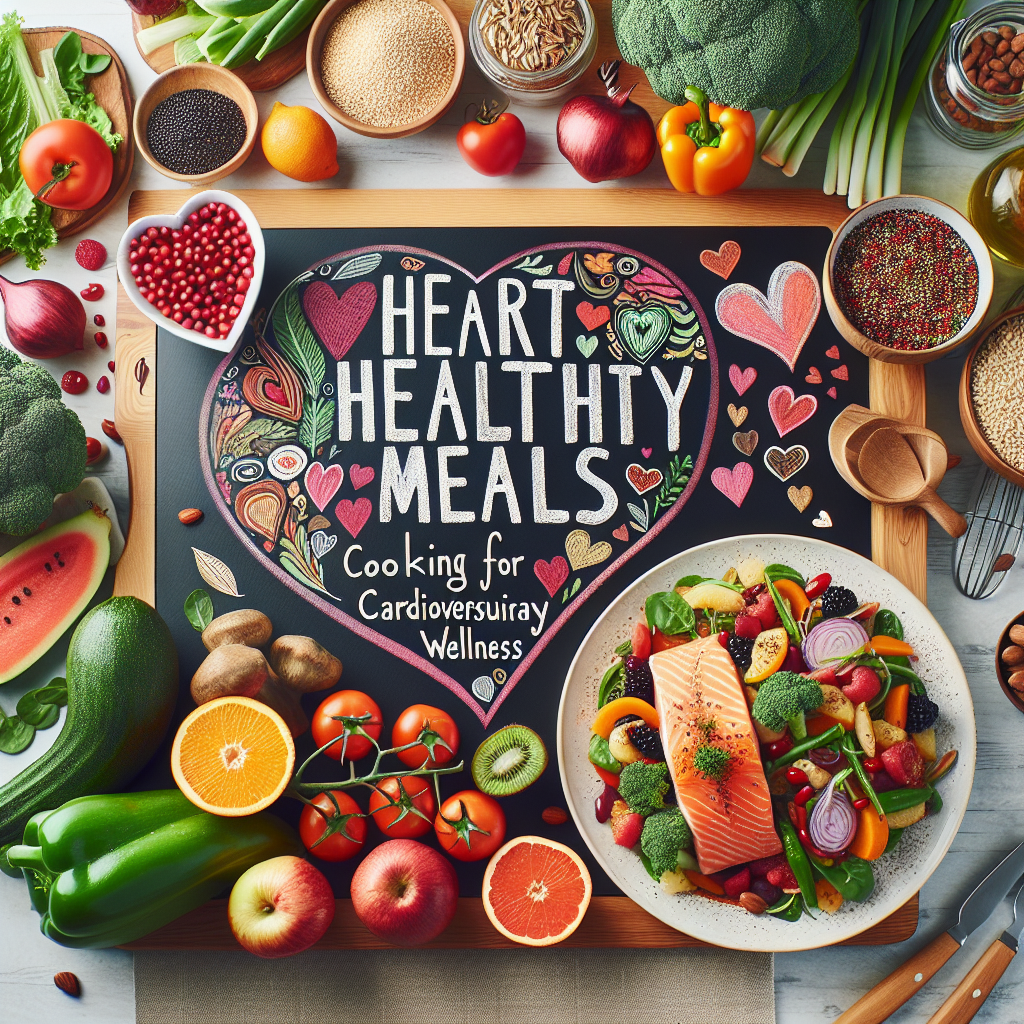[ad_1]
Eating for heart health is one of the most effective ways to reduce the risk of heart disease. Making heart-healthy meals part of your daily routine can improve your cardiovascular wellness significantly. In this guide, we’ll explore delightful recipes and essential tips to help you cook meals that are not only delicious but also extremely beneficial for your heart.
Understanding Heart-Healthy Ingredients
Before we dive into the recipes, understanding the cornerstone ingredients of a heart-healthy diet is crucial. These ingredients help lower bad cholesterol, reduce your risk of heart disease, and maintain blood pressure and weight. They include:
- Whole grains: Oats, brown rice, barley, and quinoa are excellent sources of fiber.
- Lean protein: Think poultry without skin, fish, particularly fatty fish like salmon and mackerel, beans, and nuts.
- Fruits and vegetables: A rainbow on your plate, these are high in vitamins, minerals, fiber, and antioxidants.
- Low-fat dairy: Products such as yogurt, milk, and cheese help in maintaining blood pressure.
Heart-Healthy Cooking Techniques
Cooking for heart health doesn’t mean you have to give up flavor. Here are some techniques to ensure your meals are full of taste while being beneficial for your heart:
- Grilling, baking, steaming, or broiling over frying helps reduce fat intake.
- Using herbs and spices instead of salt to season meals can help manage blood pressure.
- Incorporating healthy fats like olive oil in your cooking instead of butter or shortening contributes to lower cholesterol.
Recipes for a Heart-Healthy Diet
1. Salmon with Walnut-Quinoa Salad
This recipe combines omega-3-rich salmon with protein-packed quinoa, making it a powerhouse meal for heart health.
Ingredients:
- 4 salmon fillets
- 1 cup quinoa
- 1/2 cup chopped walnuts
- Mixed vegetables (such as cucumber, tomatoes, spinach)
- Olive oil, lemon juice, salt, and pepper to taste
Method:
- Cook quinoa as per instructions and let it cool. Mix in vegetables, walnuts, olive oil, lemon juice, salt, and pepper.
- Season the salmon with salt and pepper, then grill until cooked to your liking.
- Serve the salmon over a bed of the walnut-quinoa salad.
2. Spinach and Berry Smoothie
A perfect heart-healthy breakfast or snack, this smoothie packs a nutritious punch with antioxidants from berries and iron from spinach.
Ingredients:
- 1 cup fresh spinach
- 1/2 cup mixed berries (fresh or frozen)
- 1 banana
- 1/2 cup Greek yogurt
- 1 cup almond milk
Method:
- Combine all ingredients in a blender until smooth.
- Adjust the consistency with more almond milk if needed. Serve immediately.
Key Takeaways
- Introduce a variety of whole, unprocessed foods into your diet, prioritizing fruits, vegetables, whole grains, and lean proteins.
- Adopt healthy cooking methods like grilling, steaming, and baking instead of frying to reduce unhealthy fat intake.
- Incorporate heart-healthy fats found in foods like fish, nuts, and olive oil to manage cholesterol levels.
- Limit intake of salt, sugar, and processed foods to help prevent hypertension and cardiovascular disease.
- Stay hydrated and practice portion control to maintain a healthy weight and support heart health.
Frequently Asked Questions
What foods should I avoid for a heart-healthy diet?
Avoid foods high in saturated fats, trans fats, cholesterol, and sodium such as fried foods, processed meats (like bacon and sausage), and sugary desserts. These can increase the risk of heart disease and stroke.
Can I eat eggs if I want a heart-healthy diet?
Eggs can be part of a heart-healthy diet in moderation. The key is to pay attention to the accompanying ingredients and the way eggs are prepared. Boiled, poached or scrambled eggs without added salt or butter are healthier choices.
How important is exercise in maintaining cardiovascular wellness?
Exercise is crucial for maintaining cardiovascular health. It helps improve blood circulation, reduce stress, and maintain a healthy weight. Aim for at least 150 minutes of moderate aerobic activity or 75 minutes of vigorous activity each week, along with muscle-strengthening exercises on two or more days a week.
[ad_2]

Leave a Reply